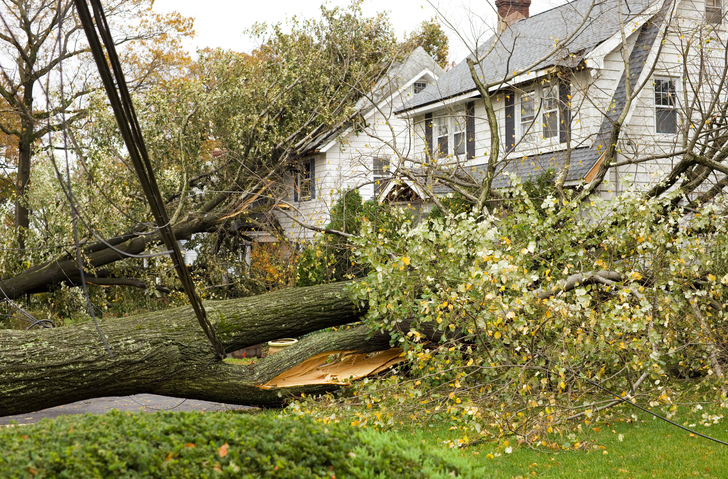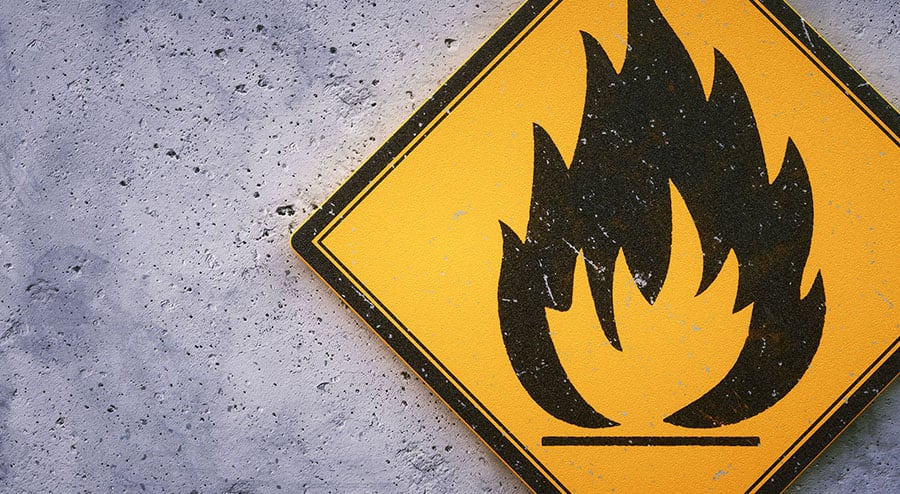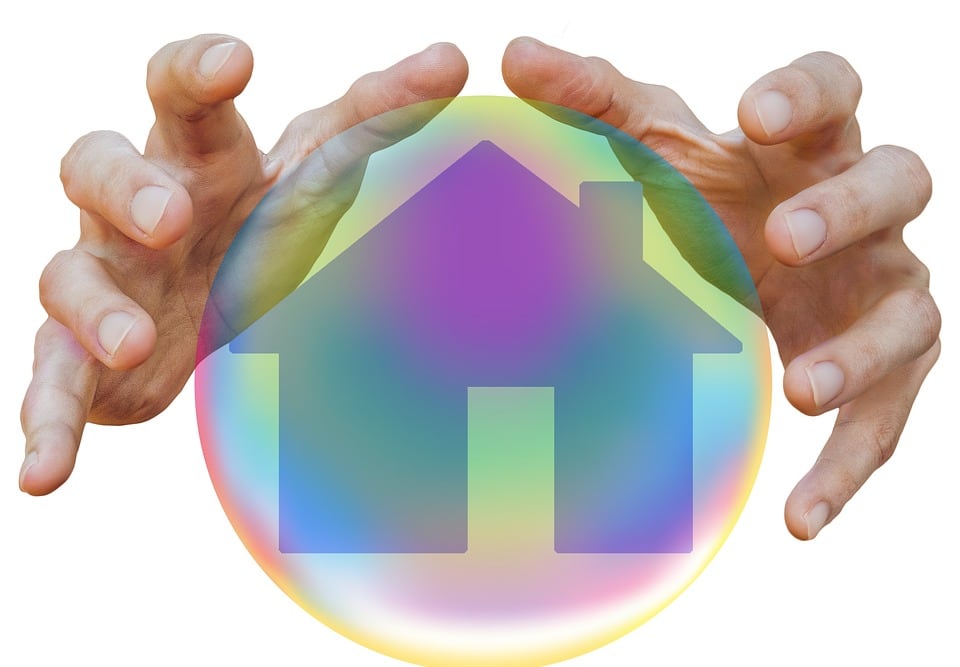Natural disasters can wreak havoc on homes, leaving homeowners vulnerable to a range of potential risks. From earthquakes and floods to wildfires and hurricanes, understanding the threats posed by these natural calamities is crucial in safeguarding our homes and loved ones. Assessing the vulnerabilities of our properties is the first step towards effective preparedness and protection. We can take proactive measures to fortify common weak points in our homes during disasters.

Crafting a comprehensive emergency preparedness plan is paramount. Such a plan should encompass evacuation strategies, communication methods, and designated family meeting points. This ensures that everyone in the household knows what to do in the event of a disaster, promoting swift and safe action.
In the event of a natural disaster, securing valuable possessions and essential documents is essential. Furthermore, having a well-organized storage system for emergency supplies ensures that they are easily accessible when needed most. Specific disaster risks, such as wildfires, floods, or hurricanes, require tailored protection strategies.
Recognizing the significance of community support, collaborative efforts can enhance overall home security during natural disasters. Emphasizing the value of preparedness and protection, this article serves as a comprehensive guide to help homeowners mitigate the impact of natural disasters on their homes and lives.
Understanding Natural Disaster Risks
There are various types of natural disasters that put homes at risk. Understanding the risks associated with these natural disasters and recognizing the specific vulnerabilities of homes in different scenarios is crucial for effective preparedness and protection.
Various Natural Disasters Threatening Homes
- Earthquakes – Sudden and violent ground shaking that can lead to structural damage and collapses, endangering residents.
- Floods – Devastating water damage, posing risks to the foundation and electrical systems of homes.
- Wildfires – Rapidly spreading fires that can engulf properties and surrounding areas, necessitating proactive protective measures.
- Hurricanes – Powerful storms with high winds and storm surges that cause widespread destruction, including roof and window damage.
Identifying Home Vulnerabilities in Different Disaster Scenarios
- Earthquake-Prone Areas – Prioritizing foundation reinforcement and securing fixtures to withstand seismic forces.
- Flood-Prone Areas – Elevating electrical systems and implementing waterproofing measures to mitigate water damage.
- Wildfire-Prone Regions – Creating defensible space around homes and using fire-resistant materials to reduce the risk of ignition.
- Hurricane-Prone Areas – Installing impact-resistant windows and reinforced doors to withstand strong winds and storm surges.
Homeowners can take proactive steps to safeguard their homes and enhance their resilience in the face of potential natural disasters, by tailoring strategies to address these identified vulnerabilities.
Assessing Home Vulnerabilities
The first step in protecting your home from natural disasters is conducting a home vulnerability assessment to address weak points in your home.
Conducting a Home Vulnerability Assessment
When it comes to safeguarding homes during natural disasters, conducting a comprehensive vulnerability assessment is of utmost importance. This assessment involves a thorough examination of the property to identify potential weak points and areas susceptible to damage. By understanding the unique characteristics of the home and its surroundings, homeowners can develop targeted strategies for preparedness and protection.
Addressing Common Weak Points in Homes
Homes may have inherent vulnerabilities that, if left unaddressed, could lead to severe consequences during natural disasters. Common weak points include windows and doors that are not adequately secured, foundations not designed to withstand seismic forces, and roofs lacking resilience to withstand hail or heavy snow loads. Identifying these weaknesses allows homeowners to take proactive steps to reinforce their homes effectively.
Answering Key Questions on Home Vulnerability
- Securing Windows and Doors – Installing impact-resistant glass, sturdy locks, and reinforcing frames can protect against the force of natural disasters.
- Reinforcing the Foundation – Utilizing techniques such as anchor bolts, steel bracing, and foundation retrofitting to enhance the home’s structural integrity.
- Making Roofs Resilient – Opting for impact-resistant roofing materials and regular maintenance to withstand natural disaster elements.
- Protecting Against Lightning Strikes – Employing lightning rods and surge protectors to safeguard electrical systems from lightning-induced damage.
- Safety Measures for High Winds and Hurricanes – Installing storm shutters, reinforcing garage doors, and securing outdoor items to prevent damage during hurricanes.
- Strengthening Walls and Ceilings – Adding reinforcement like steel connectors and cross-bracing to improve the home’s resistance to seismic events and tornadoes.
- Securing Outdoor Structures – Bolting outdoor structures to concrete foundations and using wind-resistant materials to protect against natural disasters.
- Creating Defensible Space – Clearing flammable vegetation and materials around the property’s perimeter to reduce wildfire risks.
- Safeguarding Gas Lines and Electrical Systems – Installing automatic shutoff valves and securing gas lines, as well as using surge protectors for electrical systems during natural disasters.
Homeowners who address home vulnerabilities through careful assessments and take proactive measures, can significantly enhance their home security during natural disasters and better protect their property and loved ones.
Creating an Emergency Preparedness Plan
Homeowners who take measures to defend their home from natural disasters will greatly improve the security of their homes and increase the likelihood of a safe and organized response during times of crisis.
Crafting a Comprehensive Emergency Preparedness Plan
Designing a well-thought-out emergency preparedness plan is the cornerstone of home security during natural disasters. This step-by-step guide ensures homeowners are ready to face various calamities with a clear and organized approach. Accounting for different disaster scenarios ensures families can act swiftly and decisively when the need arises.
Covering Key Aspects of Preparedness
An effective emergency preparedness plan should encompass essential elements, including evacuation planning, communication strategies, and designated family meeting points. Establishing escape routes and safe assembly areas ensures everyone knows where to go in case of evacuation. Additionally, devising communication protocols helps keep family members connected during chaotic situations, providing reassurance and critical updates.
Answering Key Questions on Preparedness
- Essential Steps for an Emergency Preparedness Plan – Analyzing potential hazards, creating a family emergency kit, assigning roles and responsibilities, and practicing evacuation drills regularly.
- Fortifying Homes against Tornadoes and Severe Winds – Installing tornado-resistant doors and windows, securing heavy outdoor items, and constructing safe rooms for added protection during severe wind events.
- Protecting Homes from Flooding – Elevating electrical systems and appliances, installing sump pumps, sealing foundation cracks, and considering flood insurance coverage to mitigate damage from floods and severe weather events.
Crafting a comprehensive emergency preparedness plan and covering crucial aspects of preparedness, means homeowners can proactively mitigate risks and ensure their families are well-prepared to face the challenges posed by natural disasters.
Fortifying Your Home
Fortifying home structures and embracing smart home technology allows homeowners to significantly enhance their security during natural disasters.
Reinforcing Home Structures for Better Protection
Strengthening the physical integrity of a home is paramount to improving its resilience during natural disasters. We delve into various strategies for fortifying windows, doors, walls, and roofs to withstand the impact of calamities. Installing impact-resistant windows and sturdy doors, along with securing walls and ceilings with additional bracing, can help homes better endure the forces exerted by disasters like earthquakes and tornadoes.
Enhancing Security with Smart Home Technology
Smart home technology offers innovative solutions to bolster home security during natural disasters. Exploring the possibilities of interconnected devices and sensors, we discuss how these advanced systems can provide real-time monitoring and alerts. This technology enables homeowners to remotely assess their home’s status during emergencies and receive immediate notifications about potential threats, empowering them to take swift action.
Answering Key Questions on Home Fortification
- Effective Home Security Systems – Discussing alarm systems, security cameras, and environmental sensors that can detect changes in weather conditions and alert homeowners of potential hazards during natural disasters.
- Utilizing Smart Home Technology – Exploring the integration of smart devices, such as smart thermostats and water leak detectors, to proactively manage risks and reduce damage during emergencies.
These proactive measures empower them to stay informed and take decisive action, ultimately safeguarding their homes and loved ones during challenging times.
Securing Valuables and Essentials
To safeguard documents and possessions during natural disasters emergency supplies should be easily accessible.
Safeguarding Important Documents, Possessions, and Emergency Supplies
Protecting valuable possessions and essential documents is essential during natural disasters. We provide practical tips on how to secure important papers like identification documents, insurance policies, and medical records. Additionally, we discuss ways to protect cherished belongings and heirlooms by using fireproof safes and secure storage options.
Ensuring Accessibility of Emergency Supplies during Disasters
Accessibility to emergency supplies can make a crucial difference during times of crisis. We suggest efficient storage solutions to organize and maintain emergency kits, ensuring that essential supplies like non-perishable food, water, first aid items, and flashlights are readily available and easy to locate when needed most.
Answering Key Questions on Securing Valuables and Essentials
- Protecting Homes from Wildfires – Addressing measures such as creating defensible space, using fire-resistant landscaping, and installing spark arresters on chimneys to reduce wildfire risks and protect homes from damage.
- Fortification against Tornadoes and Severe Winds – Recommending safe storage areas within the home and securing valuable items to reduce the risk of damage during tornadoes and high winds.
- Storing Emergency Supplies – Offering tips on organizing emergency kits, designating accessible storage locations, and regularly updating supplies to ensure they remain effective during disasters.
Homeowners should implement these strategies for securing valuables and essentials to minimize potential losses and maximize their preparedness for natural disasters. Taking proactive measures to protect important documents and ensure accessible emergency supplies empowers individuals and families to face adversity with greater confidence and resilience.
Mitigating Specific Disaster Risks
Homeowners can better prepare for specific natural disasters and mitigate potential damages, by tailoring protection strategies and offering guidance on post-disaster assessments.
Tailoring Protection Strategies for Specific Natural Disasters
Different natural disasters require tailored protection strategies. In this section, we delve into specific approaches to safeguard homes against common disasters such as wildfires, floods, hurricanes, and earthquakes. For instance, in wildfire-prone areas, creating defensible spaces around the property and using fire-resistant building materials are effective ways to reduce the risk of damage. Similarly, in flood-prone regions, elevating electrical systems and employing flood barriers can help minimize potential water damage to homes.
Handling Post-Disaster Structural Damage Assessments
After a natural disaster strikes, assessing the structural integrity of a home is crucial to identify potential risks and address damages. We provide guidelines for homeowners on how to conduct post-disaster structural damage assessments safely and thoroughly. By recognizing warning signs of structural issues like cracks, tilting, or settling, homeowners can take prompt action to prevent further damage and ensure the safety of their homes.
Answering Key Questions on Disaster Mitigation
- Protecting Homes from Wildfires – Elaborating on measures such as creating defensible space, using fire-resistant landscaping, and installing spark arresters on chimneys to reduce wildfire risks and protect homes from damage.
- Identifying Warning Signs of Structural Damage – Offering insights on identifying signs of potential structural issues, such as cracks in walls, ceilings, or foundation, and what actions to take in such situations.
- Resources and Assistance for Home Security – Providing information on community programs, local authorities, and available resources that can help homeowners enhance their home security and preparedness for natural disasters.
Equipped with the knowledge of warning signs and available resources, homeowners can proactively safeguard their homes and families, ensuring a more resilient response to the challenges posed by natural calamities.
Collaborative Community Preparedness
Communities that collaborate on programs and resources to prepare for disaster have stronger home security overall.
The Role of Community Support in Enhancing Home Security
Collaboration within communities plays a vital role in strengthening home security during natural disasters. In this section, we emphasize the significance of neighbors and local organizations working together to create a resilient support network. When communities unite, they can share valuable insights, experiences, and resources, fostering a sense of collective responsibility to protect one another and their homes.
Community Programs and Resources for Preparedness
Communities offer a wealth of resources and programs dedicated to disaster preparedness. We explore various initiatives, such as community emergency response teams (CERTs), neighborhood watch programs, and local government initiatives, that provide residents with training, tools, and information to enhance their preparedness for natural disasters.
Answering the Key Question on Community Preparedness
Some wonder how community collaboration could enhance home security. Communities can work together and organize disaster preparedness workshops, establish communication networks, and conduct neighborhood drills. Engaging in joint initiatives can bolster awareness and preparedness levels, making communities more resilient in the face of natural disasters.
Homeowners can foster a strong and connected network within their neighborhood, by emphasizing the importance of community support, discussing available programs, and providing insights on community collaboration. The collective efforts of a united community not only enhance home security during natural disasters but also create a safer and more prepared environment for everyone involved.
Conclusion
The ever-increasing frequency and intensity of natural calamities necessitate a proactive approach in safeguarding our homes and loved ones. Understanding the risks associated with earthquakes, floods, wildfires, and hurricanes empowers homeowners to tailor their preparedness strategies effectively. It is essential for readers to take action now and implement the strategies discussed to fortify their homes against the impact of natural disasters. Proactive homeowners can significantly reduce potential damages and ensure a safer environment for their families.




